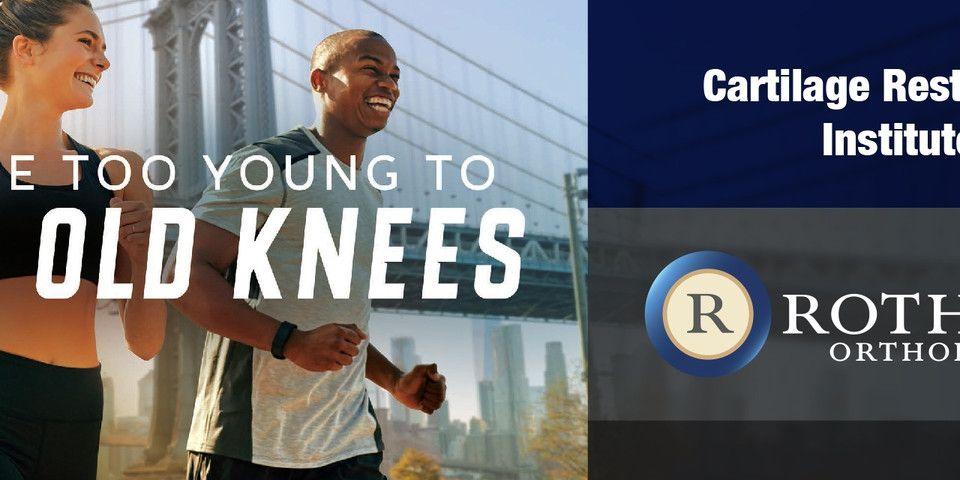“Is it Bad Enough?” When to See an LCL Tear Specialist in Gramercy Park
Learn the Basics of LCL Tear Treatment
Ligaments are strong, elastic bands of tissue that connect the bones within a joint. The LCL, or lateral collateral ligament, stretches down the outside of the knee to attach the thigh bone (femur) to the lower-leg bone (fibula). Normally, the LCL works to keep the knee stable, which is why an LCL tear can threaten the integrity of the knee if it’s not properly treated.
You may be aware of the proper steps to take when you get injured, but how do you know when it’s time to take the next step and visit an LCL tear specialist in Gramercy Park? In this article, you’ll learn exactly what to do as soon as you realize you’ve been injured, what a normal LCL recovery time looks like, and how to know when it’s necessary to visit a doctor.
After the Injury
The most common way for an LCL injury to occur is when the inside of the knee receives a direct blow. This puts pressure on the outside of the knee, which tries to support it. When the trauma overcomes the strength of the outer knee, the LCL will stretch or even tear.
If the ligament is only mildly sprained, you may not realize right away that an injury has occurred. A partial or complete tear usually leads to knee swelling (especially on the outside surface), stiffness, pain or soreness, and knee instability. When this happens, the first thing you must do is rest. Stop putting weight on the knee as much as possible and be sure to elevate it. You should lie down and put several pillows under your knee so that it is above your heart. This will reduce blood flow to the area, which will help with the inflammation.
Apply ice to the injured site for 15-20 minute periods, but be sure to cover the ice in a cloth so that it does not touch the bare skin directly. You should wait for an hour in between each icing session. If you don’t have a health condition that prohibits you from taking NSAIDs, then an anti-inflammatory medication can be taken to help with the pain and swelling. At this point, it is also advisable for you to make an appointment with an orthopaedic doctor to get your knee examined.
At Your Knee Specialist Appointment
A knee specialist will examine your knee to determine the nature of your injury, including whether there are additional ligament or tendon injuries that might complicate your recovery. The doctor may perform an LCL injury test such as the varus, or adduction stress test, which compares the adduction (bending inward) ability of both knees. If one of the knees adducts more than the other, then the test is positive, indicating a torn ligament.
If an LCL tear is left untreated, the knee may become unstable and prone to further injury over time. That’s why it’s so important to visit the doctor as soon as possible, rather than later, before the injury can take a toll on the surrounding tissue systems.
After Your Appointment
Depending on the severity of the injury, LCL tear treatment may include:
-
Splinting: A splint will keep the injured part from moving, protecting it from further damage.
-
Bracing: A brace helps keep the knee straight and prevents motion after a major injury or surgery. You may need more or less support during healing depending on your particular case. There are many types of braces that can be used; your doctor will be able to determine which is best for you.
-
Pain relievers: NSAIDS may be used to decrease inflammation, which speeds up recovery.
-
Limiting movement: Let your body rest until symptoms are gone.
-
Physical therapy: Most knee injuries will necessitate a rehabilitation program to help you regain strength and range of motion.
-
Surgery: Most isolated LCL injuries can be treated without surgery. Your doctor may suggest surgical repair only in rare cases, such as if it’s torn in such a way that it cannot heal on its own or when there are additional ligament injuries.
Minor LCL ligament injuries heal within a few weeks, but it will take up to six weeks to rebuild strength. A more severe tear (grade 3) requires four to eight weeks to heal, with a recovery time that takes considerably longer.
Seek a Rothman Orthopaedic Institute LCL Tear Specialist in Gramercy Park
If you or someone you know has recently suffered a knee injury, it’s essential to seek medical care as soon as possible. Rothman Orthopaedic Institute offers world-class treatment for all types of knee injuries, including LCL tears. If you live or work in New York City, then Rothman Orthopaedic Institute is an excellent option for quality orthopaedic care. You can learn more about us or make an appointment by calling 1-800-321-9999.
Related Physicians
Related Specialties
Related Conditions
Related Programs
-

Cartilage Restoration Institute
This is a center where patients can go to have their disabled joint biological resurfaced, realigned, and stabilized without having the joint replaced by artificial materials such as metal and plastic. It is well known that the outcomes of patients under the age of 50 undergoing artificial joint replacement are not as good as we would like. Therefore we feel the future of Orthopaedics is to try to restore a joint back to its original anatomy by realignment, ligament reconstruction, and cartilage restoration.Read More




